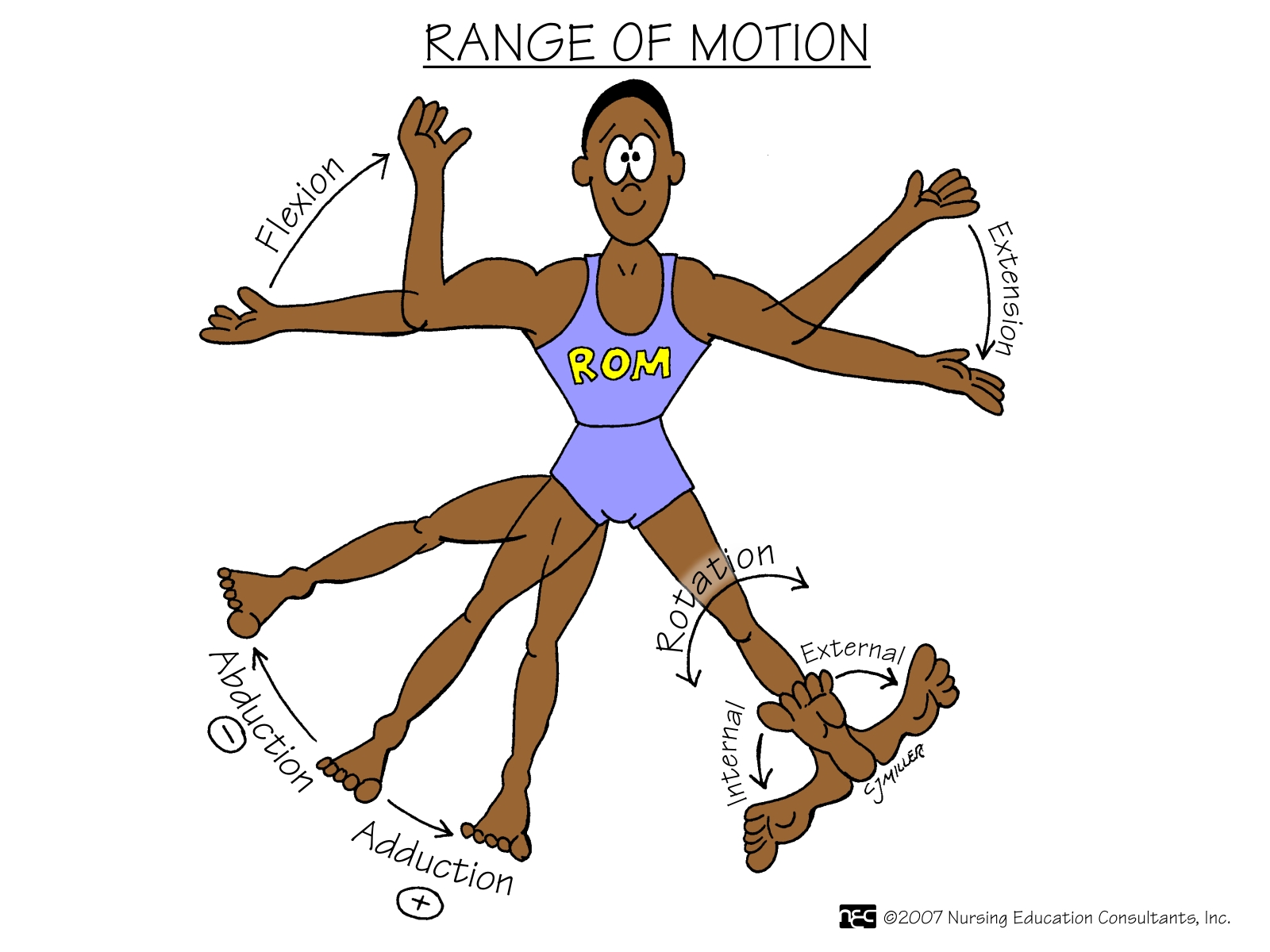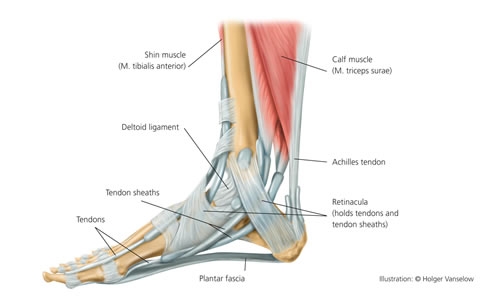ROM or Range Of Motion
RANGE OF MOTION

We always hear about ROM, or Range Of Motion, just what is it and why is it so important?
Range of Motion is the measurement of movement around a specific joint or body part. In order for a joint to have full range of motion, it must have good flexibility. Each joint has its own level of flexibility, expressed in degrees.
Flexibility is the range of motion around a joint, and can refer to ligaments, tendons, muscles, bones, and joints. If a joint has good range of motion, then it would be able to move in all planes and directions permitted to that joint. For example, the elbow, which is a hinged joint, only permits movement in one direction, but it should provide full range of motion from extension to flexion.
Types of Range of Motion
Passive range of motion is typically practiced on a joint that is inactive. The physical therapist may use this exercise on a client who is paralyzed or unable to mobilize a specific joint.

Active-assistive range of motion exercises are more progressive, intended for the client to perform movement around the joint with some manual assistance from the physical therapist or from a strap or band. These exercises can often feel painful, and the muscles can feel weak. Increasing range of motion with these exercises should be a gradual advancement.



I am fortunate enough to receive two sessions per day of Active-assistive range of motion, at home. One session on my lower Stroke Affected side, and another session on my upper Stroke affected side, plus I use the Ex N Flex 250, pictured here, and no, that's not me for 40-45 minutes per day. I also wear the SaeboStretch(Dynamic Resting Hand Splint), pictured above, at night while I sleep, that helps me maintain the ROM in my hand, wrist and fingers, without causing damage to my joints.
Active range of motion exercises are highly independent, performed solely by the client. The physical therapist's role may be simply to provide verbal cues.

What I did not realize, and how could I, was that your body (muscles / tendons) start to change (shorten / distort) within hours of suffering a brain injury, such as a Stroke. So time is of the essence. When I was in the hospital, immediately following my Stroke, the staff would shorten my bed so that my toes would be pointing straight up. My family, not knowing, wondered why they were doing that as it looked uncomfortable. Following my second Stroke, a short time later, they failed to do this, which resulted in the tendons in my ankle and stroke affected leg to shorten. It took months of constant stretching on a PLATFORM WEDGE, to correct this. I still use a wedge everyday, as part of my exercise routine, to ensure my tendons and muscles maintain their proper ROM. If the muscles and tendons in your leg / ankle do shorten, believe me, it is extremely painful to correct it. So an ounce of prevention is worth a pound of cure. If unable to stand, a P.F.S. Night Splint can be used to slowly perform the stretch for you as you sleep. They tried that on my leg in rehab, but the muscles / tendons in my leg was so tight, or shortened, they broke the splint. Once the tendons and muscles are stretched and you regain your ROM, the SaeboStep will work much better, and help solve your Foot Drop problem.
Muscles & Tendons Wedge P.F.S. Night Splint SaeboStep




Another great way to increase or maintain Range Of Motion is through Electrical Muscle Stimulation. You can read about this here. TENS or EMS, What's the difference? Which one do I need? – JGH Rehab
Phase 5 TENS / EMS Combo
Phase-5 TENS + EMS Combo – JGH Rehab

SaeboStim Pro Electrical Stimulation Device for Stroke Recovery | Saebo

I was having Active-assistive range of motion exercises twice a day, plus I was performing my own daily exercises, as well as I could, but it was very painful. I used EMS during a SaeboFlex Boot Camp with Henry Hoffman, for three days. When I returned home, I could not believe the difference in the Range Of Motion in my shoulder, arm and hand, and as an added bonus, the pain was gone. Needless to say, I now use EMS on my whole Stroke affected side, because not only does EMS help maintain my Range Of Motion, but it also helps reduce my Spasticity, and aids in Muscle Re-Education. Like I mentioned in an earlier post, if you are able to, but not using Electrical Muscle Stimulation as part of your Recovery program, you are really missing out on a key component. It really made a big difference for me. I firmly believe that every person, with a neurological condition, that could result in Spasticity and/or reduced Range Of Motion, should have their own personal TENS / EMS at home, and include it in their home rehab / exercise program.
SaeboFlex Boot Camp

All content provided on this blog is for informational purposes only and is not intended to be a substitute for professional medical advice, diagnosis, or treatment. Always seek the advice of your physician or other qualified health providers with any questions you may have regarding a medical condition. If you think you may have a medical emergency, call your doctor or 911 immediately. Reliance on any information provided by the JGH Rehab website is solely at your own risk.
